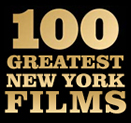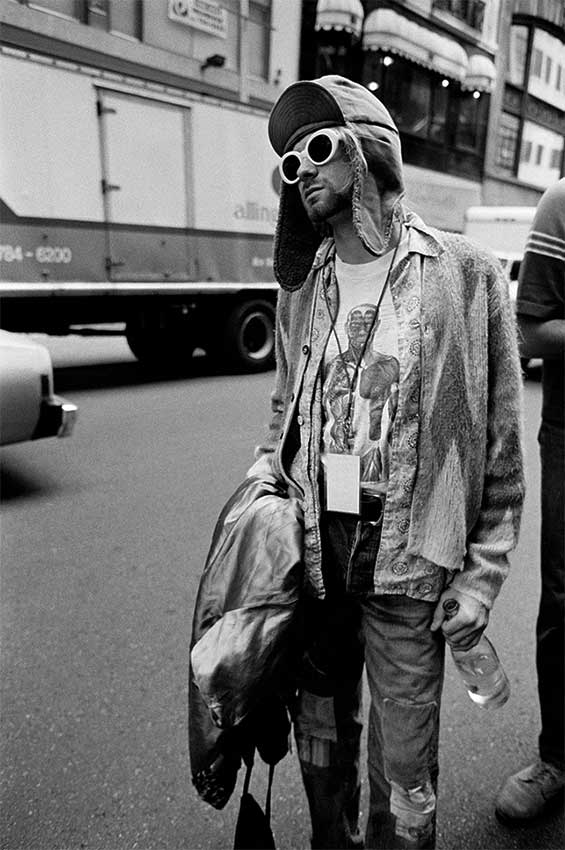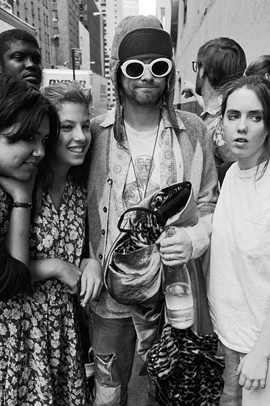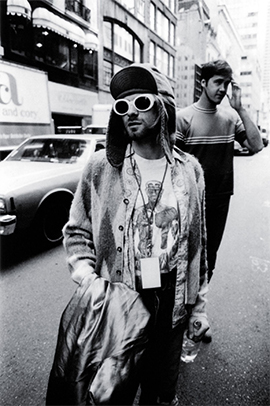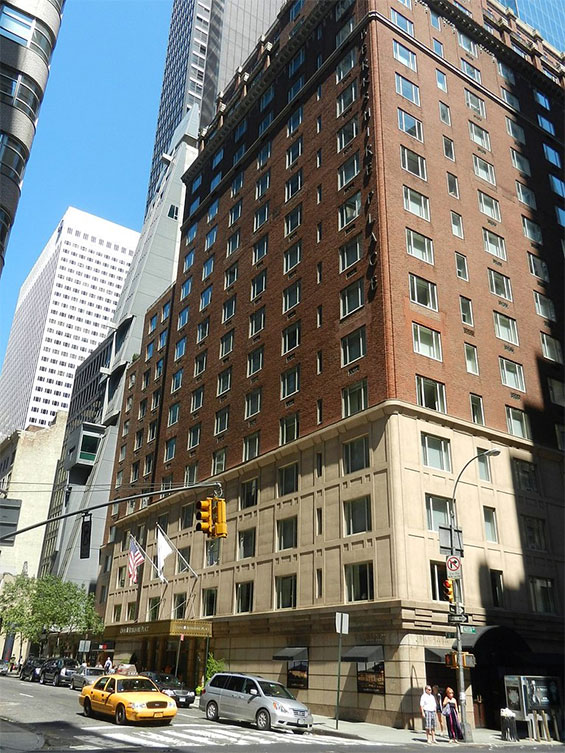Kurt Cobain in Midtown Manhattan in 1993
|
Nirvana frontman Kurt Cobain arrived four hours late to what would be his last American photo shoot, in November 1993, at a hotel in midtown Manhattan, and immediately asked for a bucket having felt sick. The photographer, who was shooting Nirvana at New York’s Omni hotel for an Observer magazine feature, learned later that Cobain was still feeling ill after overdosing just hours before. However, although visibly stoned and queasy, the singer happily posed for photographs with fellow band members Krist Novoselic and Dave Grohl, first in the hotel’s basement conference room and later in the street and at the Roseland Ballroom where Nirvana were due to play a show that night.
Twenty-six years on, and otsoNY takes a look at East 52nd Street, the place where Cobain once posed with fans. The street that stretches 1.9 miles long from west to east across Midtown Manhattan used to be known as the city's centre of jazz performance from the 1930s to the 1950s. Following the repeal of Prohibition in 1933, 52nd Street replaced 133rd street as “Swing Street" of the city. The blocks of 52nd Street between Fifth Avenue and Seventh Avenue became renowned for the abundance of jazz clubs and lively street life. The street was convenient to musicians playing on Broadway and the 'legitimate' nightclubs and was also the site of a CBS studio. Musicians who played for others in the early evening played for themselves on 52nd Street.
In its heyday from 1930 through the early 1950s, 52nd Street clubs hosted such jazz legends as Miles Davis, Harry Gibson, Dizzy Gillespie, Billie Holiday, Nat Jaffe, Marian McPartland, Thelonious Monk, Charlie Parker, Louis Prima, Art Tatum, Fats Waller, Trummy Young, and many more. Although musicians from all schools performed there, after Minton's Playhouse in uptown Harlem, 52nd Street was the second most important place for the dissemination of bebop;.[1] In fact, a tune called "52nd Street Theme" by Thelonious Monk became a bebop anthem and jazz standard.
By the late 1940s, the jazz scene began moving elsewhere around the city and urban renewal began to take hold of the street. By the 1960s, most of the legendary clubs were razed or fell into disrepair. The last jazz club there closed its doors in 1968, though one remains as a restaurant. Today, the street is full of banks, shops, and department stores and shows little trace of its jazz history. The block from 5th to 6th Avenues is formally co-named "Swing Street" and one block west is called "W. C. Handys Place". The 21 Club is the sole surviving club on 52nd Street that also existed during the 1940s. |
Quick Links
Chart Listings
Disclaimer
All images that appear on the site are copyrighted to their respective owners and otsoNY.com claims no credit for them unless otherwise noted. If you own the rights to any of the images and do not wish them to appear on the site please contact us, and they will be promptly removed.
|
2009-2024 onthesetofnewyork.com | Film Locations | Picture Gallery | Privacy Policy | Disclaimer | Contact |
Donations for hosting |
|

